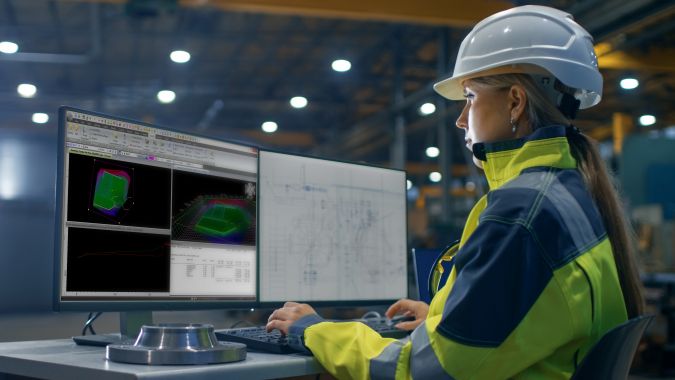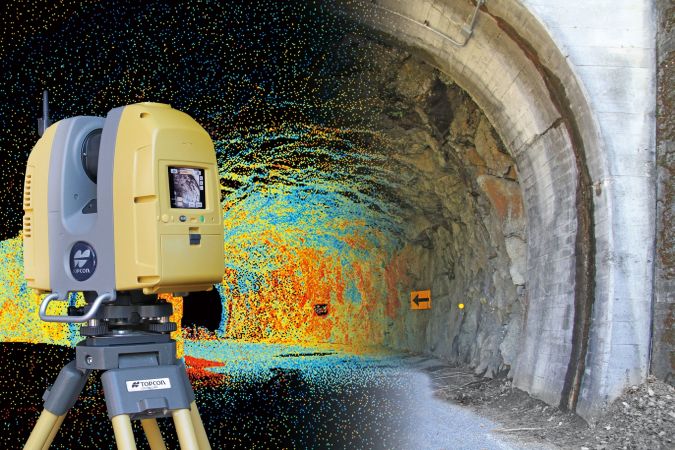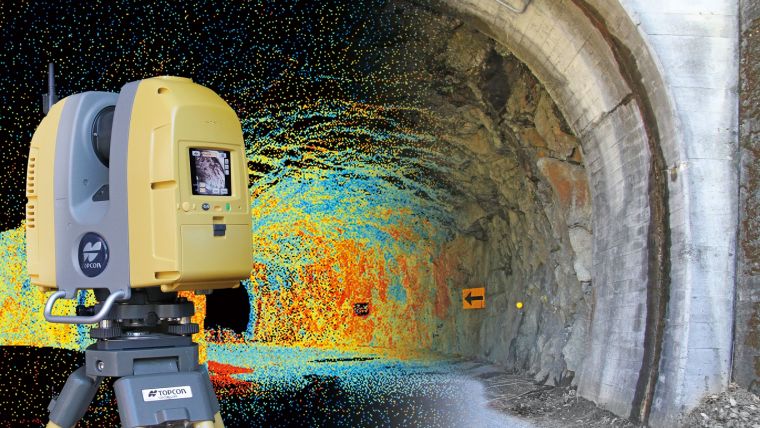The Digitalization of Construction
Creating an Industry Fit for the Future
It is estimated that the global construction industry will grow to US$10.3 trillion by 2020. Arguably, the development and investment in ever-more innovative digital tools will be key in enabling that growth. More and more businesses across Europe are beginning to embrace the fourth industrial revolution (Industry 4.0) and the opportunities digitalization presents. In this article, Leighton Davies, regional business manager for geopositioning at Topcon Europe Positioning, discusses how today’s technologies enable us to work more efficiently, safely and accurately than ever before, and what they could mean for the construction industry’s future.
At the turn of the millennium, who would have thought that digital tools would play such a big role in the construction industry as they do today? Data is now king – from design to completion – in order to understand the precise workings of a project and ensure we are working in the best, safest and most efficient way.
The current software gives us the capability to share real-time data – including any updates to plans – with every supplier, stakeholder and sub-contractor almost instantly. Communication and data-sharing platforms, such as Topcon’s MAGNET Enterprise, for example, enable true project management and avoid any delays caused by breakdowns in communication between teams. Accurate and instant sharing of data in this way is key to efficient construction.
Real-time verification
We operate in a world where we call on specialists, sub-contractors and suppliers to fulfil the often complex needs of our projects. It can be difficult to manage multiple parties adding to the build and adjusting designs, and the impact of just one single item out of tolerance by the smallest measure can quickly escalate in terms of both time and money. Verification tools such as scanners to identify deviations are by no means new, but the process often proved costly. Traditional scanning methods typically require an outside specialist to be called in, and it can take a significant amount of time for the as-built data to be processed and compared against design. This has often meant longer periods between verification, allowing mistakes to mount up and spiral into larger issues before they are spotted.
Today, there’s a digital solution enabling near real-time verification at any point of build. A combined robotic total station and laser scanner in one tool automatically registers point clouds, making it easy for the data to be processed through software that can compare a captured dataset against designs. This kind of tool can exist alongside verification software that can flag points out of set tolerances to millimetre accuracy to enable instant correction. Many major contractors across Europe are now reaping the benefits of this digital workflow, working faster and more accurately as they embrace digital and edge closer to real-time verification than ever before.

Situational awareness
Not only are digital tools able to improve efficiency, but they can also improve safety on site. While technologies like intelligent machine control are taking people away from hazardous areas around heavy plant and equipment, other technologies are enabling better situational awareness for those on active sites. The latest heads-up displays (HUDs) are allowing operators to complete survey and layout tasks while remaining fully aware of their surroundings to avoid hazards. This technology can also be specified as voice-activated, resulting in hands-free tasks that keep teams safe and working efficiently to reduce their time on site.
Furthermore, remote access to tools and teams provides greater control of assets, with new remote planning and management tools helping to protect the investments made in digital tools. One example of this is Topcon’s TS Shield. It allows complete control of total stations with remote access for checking maintenance requirements, tracking and monitoring devices and setting geographical and time limits to eliminate inappropriate use.
Industrial Internet of Things
Digital tools like these – augmented and virtual reality (AR and VR) and automation – will become increasingly commonplace in our industry and support further growth. The benefits of these technologies are instantly obvious: teams are kept safe and processes fast-tracked without sacrificing accuracy. This digital advancement, evident in solutions like Topcon’s X-53x Automatic Excavator, is making processes easier – allowing less experienced professionals to work on complex projects and enabling more experienced ones to become experts. Such technologies are becoming critical in future-proofing the European construction industry against skills gaps. Furthermore, digitalization will undoubtedly make our industry more attractive to the next generation of engineers, surveyors and architects (a tech-savvy and digital-hungry generation). With the digital tools we have today as a starting point, these new entrants will unquestionably adopt the Industrial Internet of Things (IIOT). If we continue to embrace digital innovation, not only will we engage the workforce we need for the next decade, but we will also gain champions to help standardize the adoption of tech throughout the European construction industry.
So, if digital is bolstering our workforce now and in the future, protecting our investments in people and new tools, and enabling us to work better and faster, what’s stopping blanket adoption? More often than not, the main hurdle is the upfront financial investment. Moreover, improved efficiency due to fewer mistakes can make it difficult to prove that money has been well spent.

Tender systems
Some countries within Europe are already embracing digital, but their tender processes are usually less focused on cost than others. In Scandinavia, for example, the tender system focuses on the best working processes – which are often digital – being adopted from the beginning of a project. Data is captured at every stage thanks to digital tools, so a digital representation is available as reference for future planning and maintenance. This future-proofs the final result and makes it much more valuable to clients.
Almost every major contractor now has at least one person driving the digital agenda – from transformation directors to digital adoption managers. It is clear our industry is taking up arms to future-proof ourselves and adopt tools that enable us to work better and faster. We see the start of the possibilities with AR and VR today, and we expect these technologies to help us work even more efficiently and safely tomorrow.

Value staying current with geomatics?
Stay on the map with our expertly curated newsletters.
We provide educational insights, industry updates, and inspiring stories to help you learn, grow, and reach your full potential in your field. Don't miss out - subscribe today and ensure you're always informed, educated, and inspired.
Choose your newsletter(s)
























